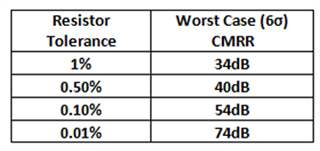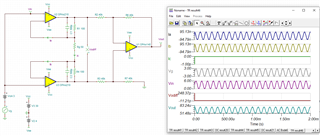Other Parts Discussed in Thread: OPA2140, INA849, INA851, PGA855
Tool/software:
Hi TI,
I am using OPA2210 as a discrete instrumentation front end as such:
I am evaluating the circuit CMRR, and based on my result, OPA2210 gives a worse result compared to OPA2140.
OPA2140: -110dB at 10kHz

OPA2210: -100dB at 10kHz

From their datasheet, I am using the 10kHz point as reference. OPA2210 gives ~130dB, while OPA2140 is 110dB. So with such a huge difference, I would expect OPA2210 to give a better CMRR performance. Also, I would also expect a better CMRR from both of the devices.
Can you help with this application? The main objective is to achieve high DC and AC CMRR at least until 100kHz










